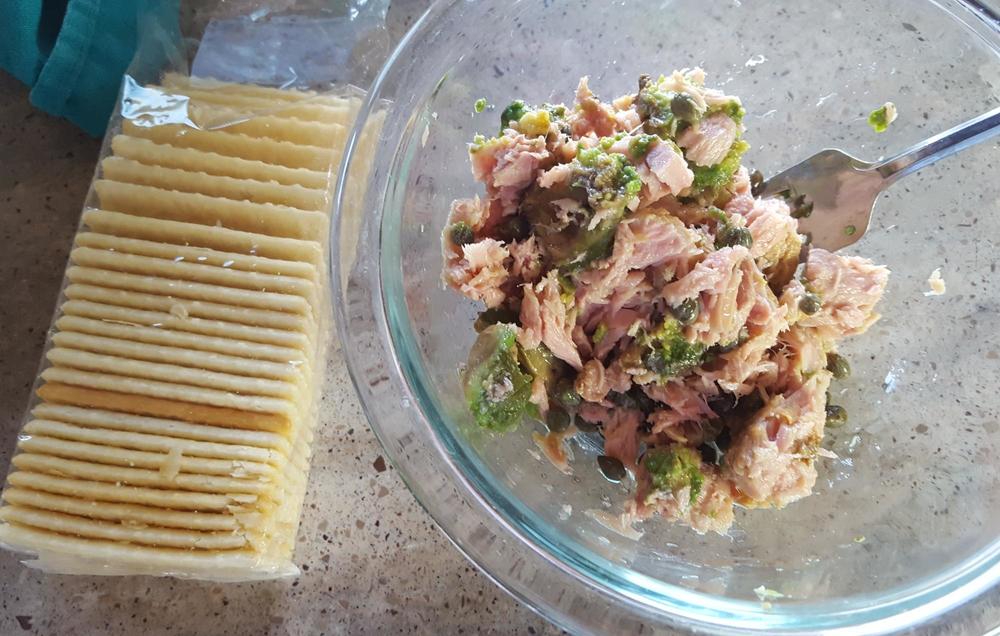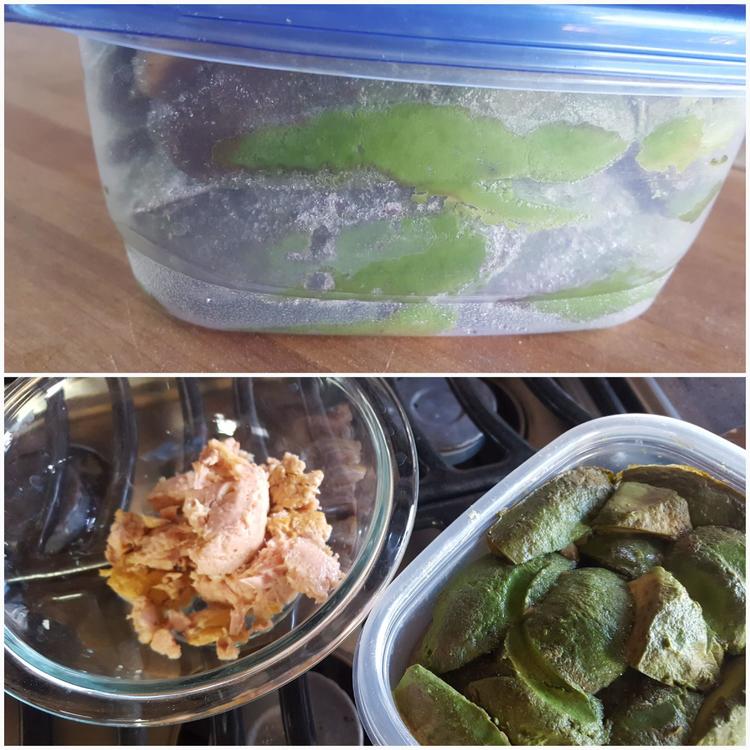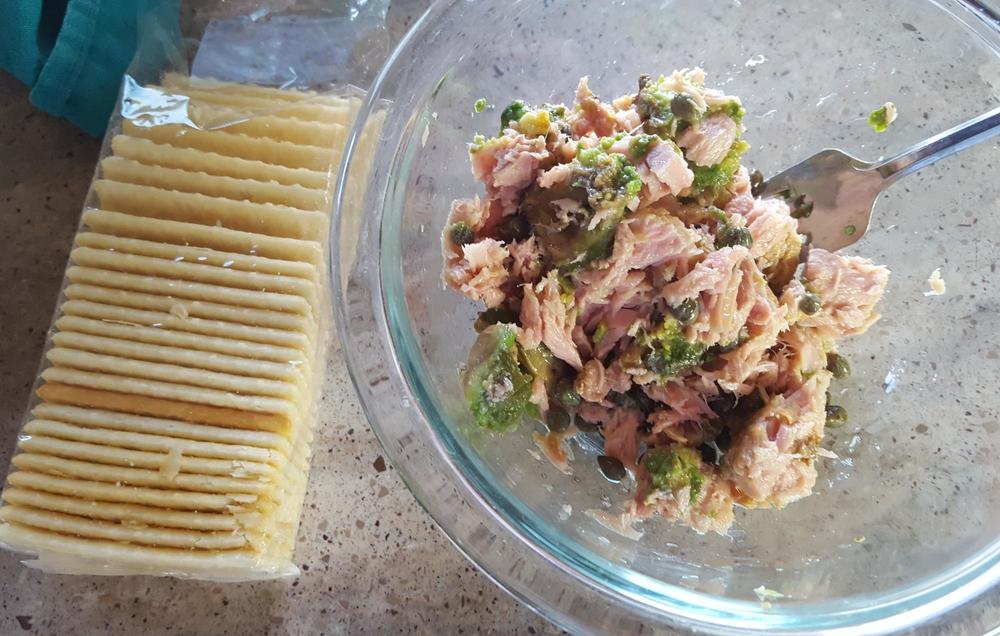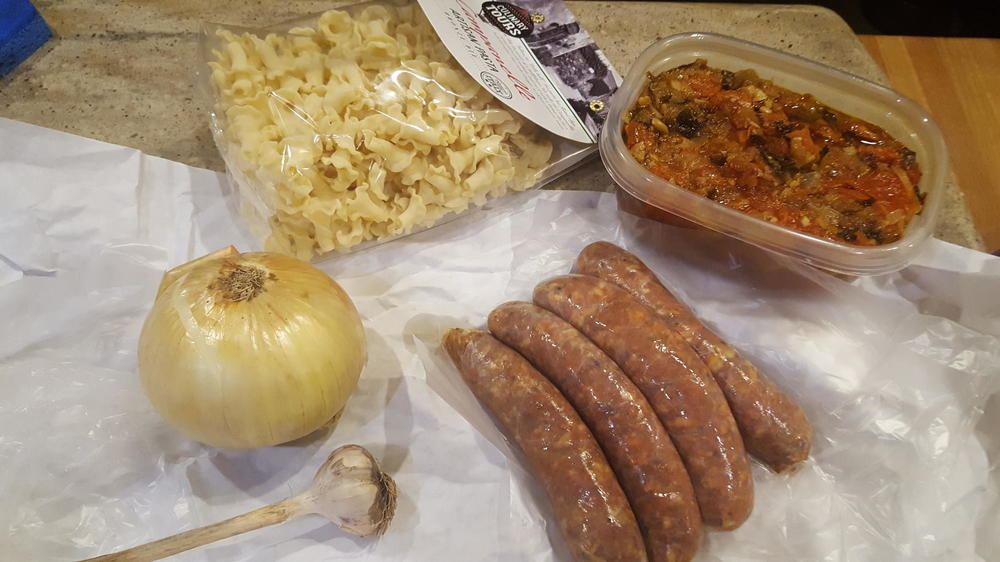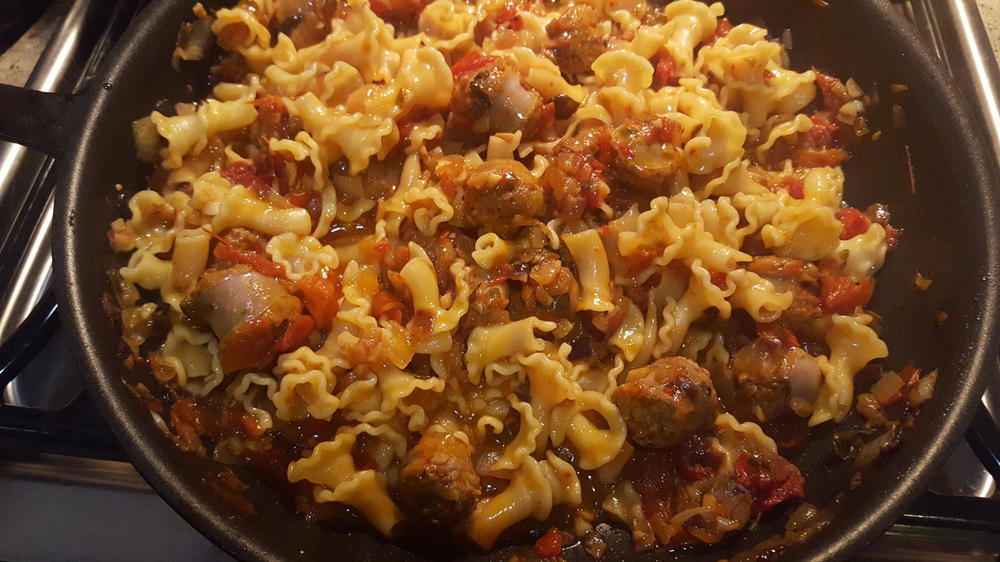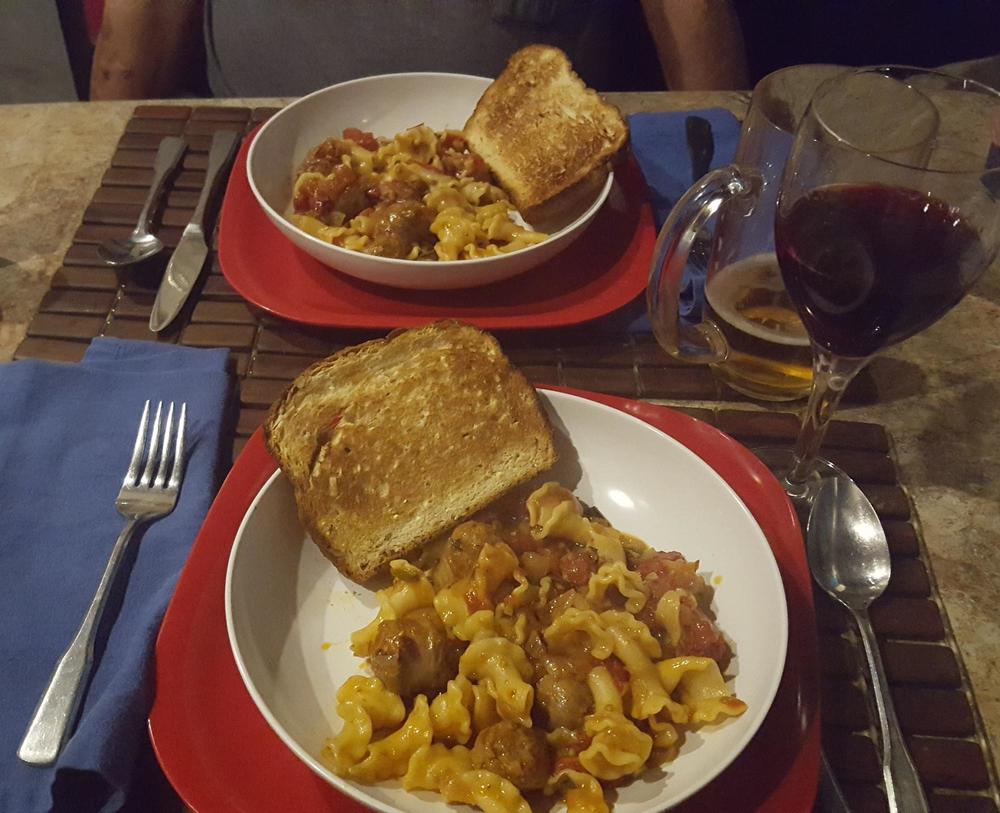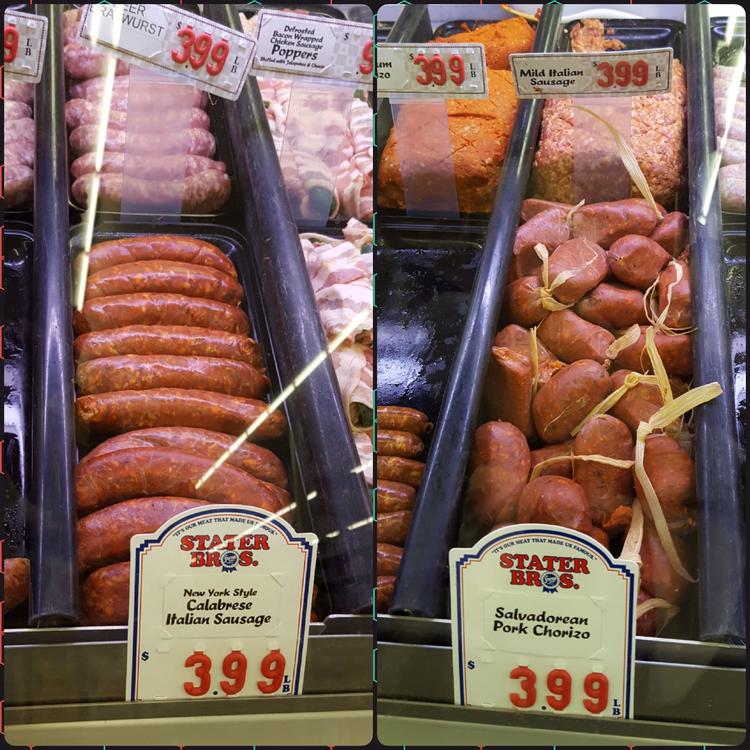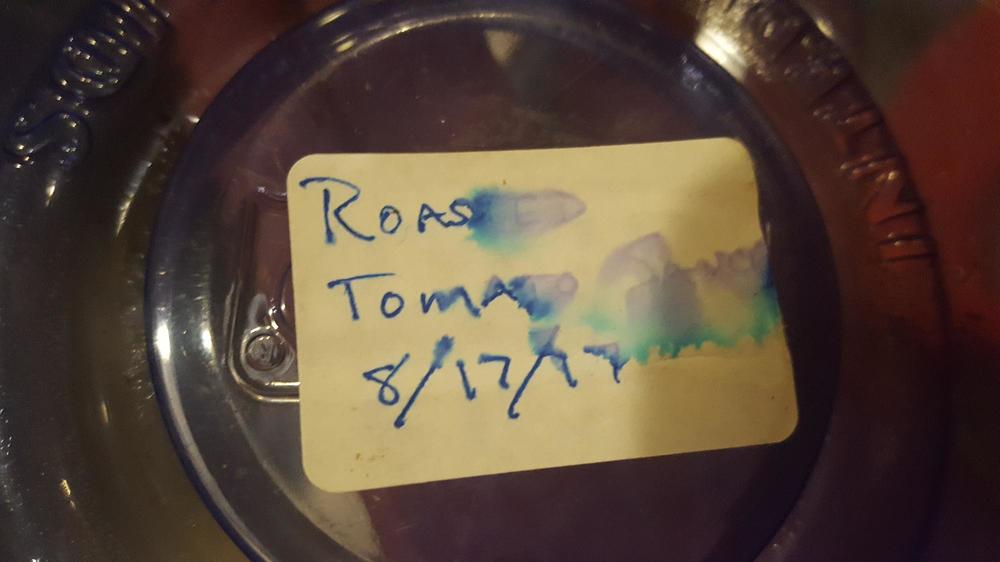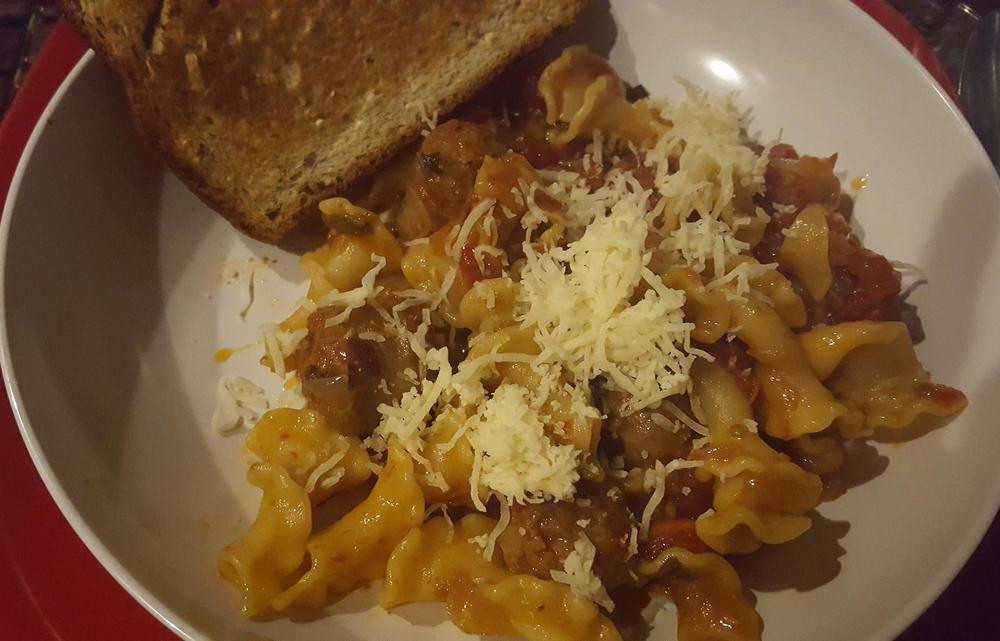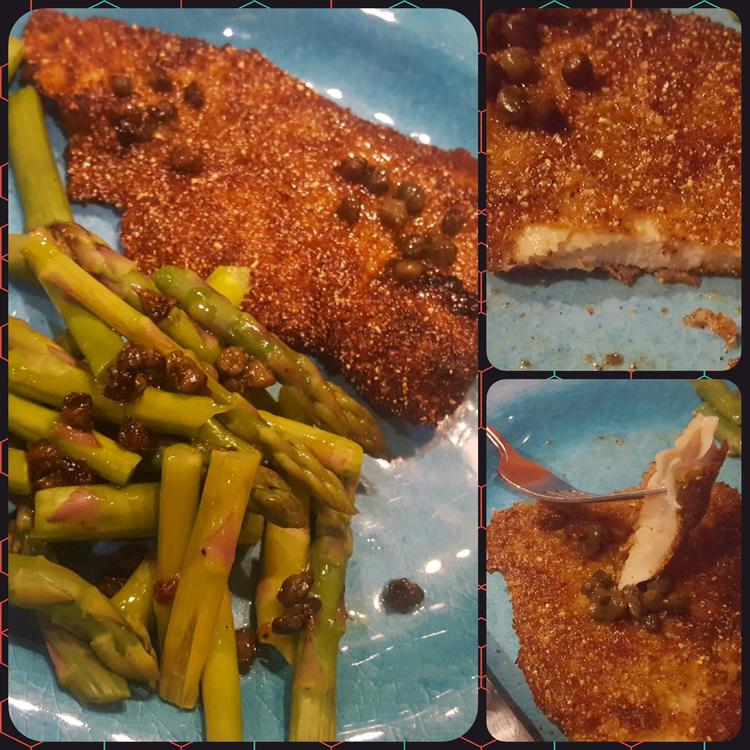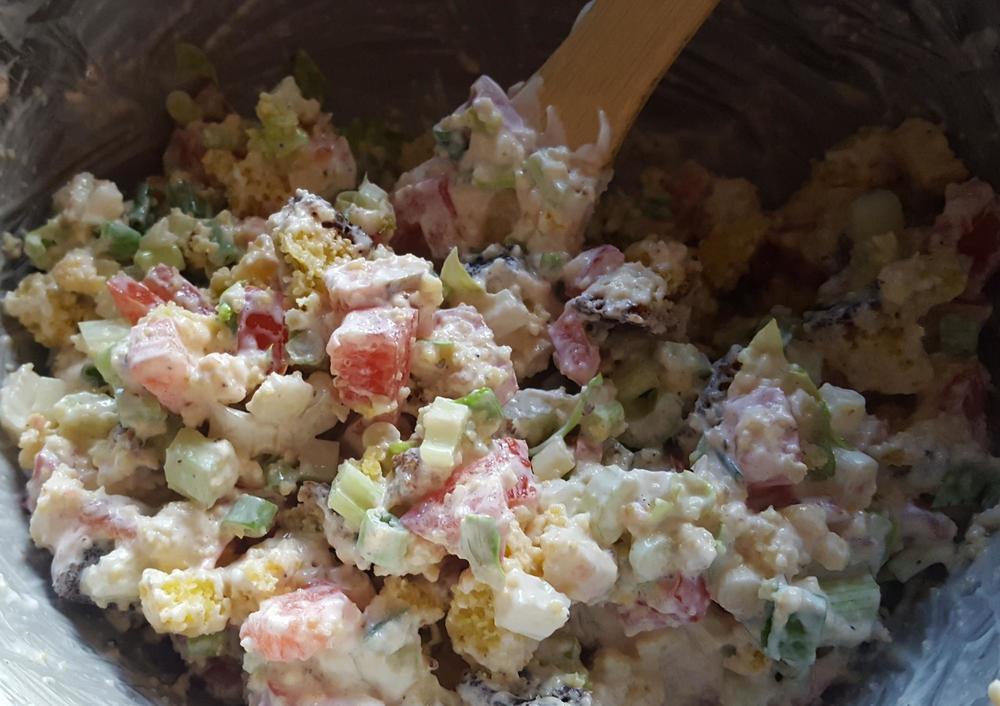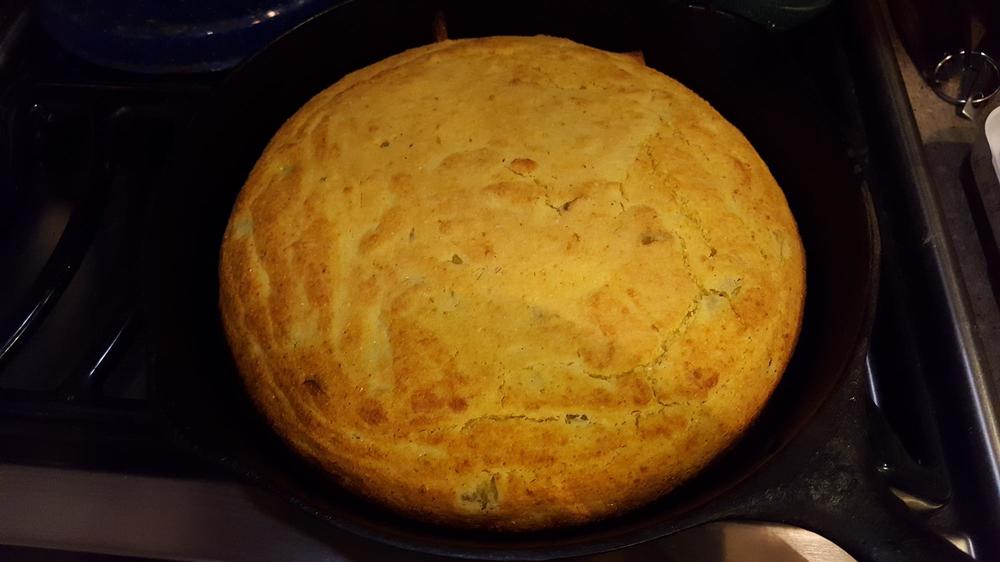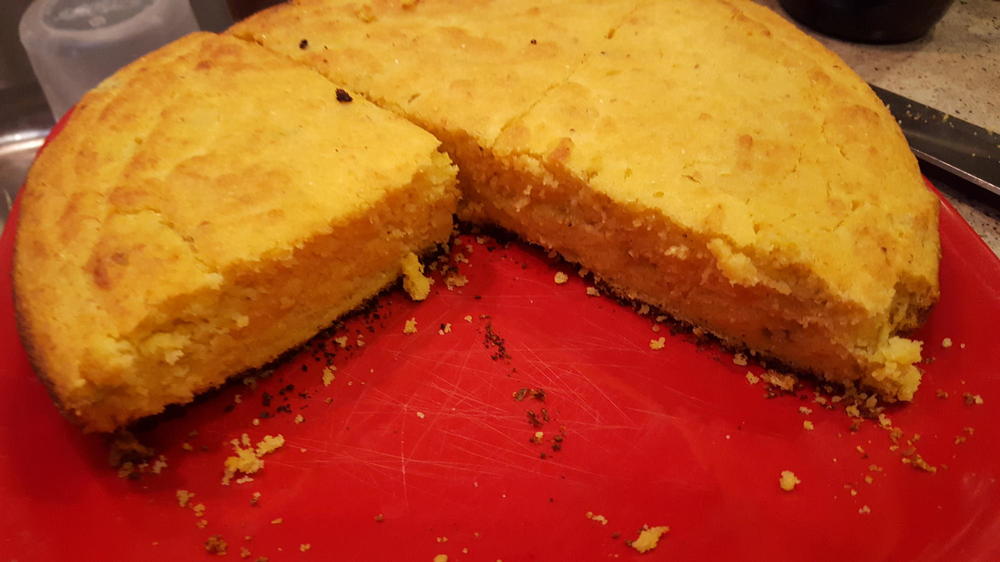-
Posts
13,754 -
Joined
-
Last visited
Content Type
Profiles
Forums
Store
Help Articles
Everything posted by Smithy
-
I'm sorry you're feeling like the Lone Ranger. I keep bookmarking things, especially based on what you post here. FWIW I have the Chicken Verde Enchiladas up for tomorrow night, and a riff on their Braised Brussels Sprouts with Mustard and Thyme for tonight.
-
Me too! Amazon's about to have a run on the darned things.
-
What a great idea! I am sooo doing that - perhaps without the honey. Hmm, one of my favorite variations on the classic BLT is to add avocado. I'll bet that cornbread with bacon and avocado would be a good combination. I went shopping yesterday - good thing, since the wind is howling and rocking the trailer today - and picked up more cornmeal as well as some buttermilk. Experiments to continue soon.
-
It will be at least 3 weeks until I have access to a store that sells asafetida. How important is this particular seasoning? It seems to appear quite often in the recipes. Those pancakes look particularly inviting.
- 95 replies
-
- Vegetarian
- Indian
-
(and 1 more)
Tagged with:
-
An Avalanche of Avocados One day when I got home from a trip to town (we were still at the ranch at the time) I found a box full of avocados next to the doorstep. Haas avocados. Ripe Haas avocados! I'm not talking about a small box, either: this was about the size of a 2- or 3-gallon bucket. There must have been 6 dozen avocados in there! Our host's tree had started dropping them abruptly due to the previous weeks' cold. He'd shared some with his dad, and then brought a bunch to us. "Don't worry if you can't use them all; they probably won't last long and some may not be all that great," he said. Still. This was a gift not to be wasted, if at all possible. I shared a dozen with our cousins. That left 5 dozen avocados. They've figured heavily in breakfast. They've worked their way into burritos, enchiladas and salads. Still, it's difficult for 2 people to work through that many - especially when my darling is indifferent to them. What to do? I've read that they lose their flavor when they're cooked. I'd heard that they could be frozen, but I couldn't remember where, or whether special steps were needed. One refrigerator drawer's worth was all I could manage in cold storage. It was time for an experiment. I scooped out the flesh of each avocado, working around the parts that were already going black, and packed them in freezer containers. I covered them with plastic wrap to block out any air, and froze them. I kept looking at those containers in the freezer. The green remained green. How would it taste? Would the texture suffer? Today I opened a container to find out. Green color, check. I scooped out some of the frozen flesh and tasted it. Good taste, check. Texture? Well, maybe that's suffered a bit, but it's certainly usable. I added some to tuna with capers, riffing off an idea from the Cooking Light Diet. I don't recommend freezing avocado if you don't have to, but if you are avalanched with them as I was, this isn't a half-bad way to save the bounty.
-
I've added it to my list, thanks. One of the things I like about the CLD is the array of recipes it throws my way. I'm a big fan of canned tuna, but hadn't considered pairing it with avocado in a salad, as opposed to mixing a tuna salad and putting slices of avocado on the bread separately. I took a page from their Tuna, Avocado and Pickled Onion Sandwich. I hadn't gotten round to making the pickled onion yet, but I had capers. I didn't want a whole sandwich, so I used crackers. How close the calorie count is I don't know, but I'm satisfied and I KNOW the fat and carb count is lower than it would have been with my usual approach to tuna salad sandwiches.
-
It looks nice! What adjustment, if any, did you need to make because of substituting bok choy for spinach? I believe that's what you said you'd done in the Dinner post about this.
-
Her introduction alone (in the Sample) is worth 3 bucks. Thanks (I think) for this link!
-
This seems to be the assertion in the link @FauxPas gave. I'm still puzzled about it. I doubt the Maillard reaction (browning) temperature changes with altitude. We know the frying oil is hotter than the Maillard reaction temperature. Is it a question of how long the meat is exposed at that temperature? To elaborate: the explanation above make sense if you assume that: the exterior browning reactions begin when, and not before, all the surface water has been steamed out and that since this happens at a lower temperature, the surface will be exposed to browning temperature for a longer time while the interior cooks to the proper temperature. Is this the reasoning?
-
Update: I've been puzzling over what made this Calabrese sausage "New York Style". Was there some New Yorkish aspect of which I was unaware? The folks I asked at Stater Bros couldn't tell me. I finally worked out the answer today: it's the brand name. The New York Style Sausage Company sells to multiple California grocery store chains, including Stater Bros. Their products include several varieties of Italian sausage, a Louisiana Hot Link and a Chorizo. So much for this sausage being a proprietary Stater Bros recipe!
-
And I want to know more about the sauce, for the same reason! Welcome back.
-
That looks delicious, @Tropicalsenior, and very festive! I've never thought of adding avocado to a bean soup. it looks like a nice touch.
-
Some treasures picked up at various shops, and hoarded all this time from home, made our Valentine's Day dinner. As the previous entry notes, it's easy even with a small freezer for me to lose track of what-all is in there. This time, I remembered the deliciously ripe tomatoes I'd roasted last summer based on @ElainaA's recipe for Slow Roasted Cherry Tomato Sauce. This sauce had been frozen since I made it, waiting for a special occasion. I thawed the "New York Style Calabrese Italian Sausage" from Stater Bros, last seen here: I pulled down from a high storage/hiding spot the bag of Campanelle I'd bought at the World Market. An onion and a small bulb of garlic joined the mix. The sausage and onion were cooked, then the garlic and tomatoes added, in a skillet while the campanelle was boiled to near-al dente. The campanelle and some of the pasta water went into the skillet to finish cooking. I like the ruffly spirals of the campanelle! It reminds me of furled petticoats. While all this was going on, we enjoyed the bubbly that I'd bought for New Year's Eve and never opened. Dinner, before we added grated cheese... and after. There are plenty of leftovers, too. Yay! Friday has become a no-cook night for me, and we'll have several choices for this Friday night.
-
Chicken schnitzel tonight. i originally bought those cutlets in order to make chicken piccata. I figured the piccata sauce would go well with a schnitzel treatment. I made a breading of bread crumbs, Hatch red chili powder, sweet paprika and corn meal. Then the chicken cutlets, which had been resting after salting for an hour or two, went through this sequence: a) dredge in flour b) dredge in an egg/water mix c) dredge in breading d) pan-fry in hot oil It took under 3 minutes per side. After each schnitzel was cooked, I put it atop a rack over a plate in the oven, to stay warm without getting soggy. (Thanks for that tip about the cooling rack, @David Ross,) When they were all done, I wiped the pan clean of the grease and breading bits, then made a butter/caper/lemon sauce in the pan. This sauce decorated the schnitzels as well as the asparagus that I'd cooked separately. There were only two problems with this dish: 1. I forgot about swirling the pan. The coating tasted good and had a nice crunch, but wasn't as light as crispy as it might have been. I need more practice there. 2. 2. We're arguing about the leftovers. This stuff is nearly irresistable!
-
I was sure I had some with us in the Princessmobile, but I haven't been able to find it in the fridge or freezer. It'll probably come rolling out of one of those compartments when we get home and I'm unpacking the remnants.
-
I'm with you on the un-oaked, dry white wine, rotuts. It's been a long time since I tasted a chardonnay treated that way! If I ever get near a Trader Joe's again, I'll look for this one.
-
I think a lot of people do. I didn't have any at the time. Next time I'll fry up a bunch of bacon first.
-
@Anna N, I feel your pain. I always overfill the darned tortilla, so my burritos end up being knife-and-fork food unless I want stuff dripping down to my elbow. The "correct" amount of filling for a burrito just seems so...so...ungenerous when it's laid out on that flat tortilla!
-
In the Cornbread topic I linked earlier, there's also dissent about what "cakey" means. I may be misusing the word. The cornbread I made puffed up a lot. In brownie terms I'd have put it at the "cakey" end of the spectrum rather than the "fudgy" end. It seemed crumbly to us. It wouldn't hold together well being dipped in bean soup the way @andiesenji says her GRAMMAW'S BLACK-SKILLET CORNBREAD does; she reports that hers is dense. Mine was not dense. On the other hand, it held up quite well to being cut up - not crumbled - for the cornbread salad I made with it, so it may not have been really crumbly. Maybe it's dry, and I haven't enough experience (yet) to know the difference. @Nancy in Pátzcuaro, thanks for your recipe. I can tell I'll be doing a lot of cornbread experiments to see which we like better. I'm curious about a step in Nancy's recipe, given above, and the Homesick Texan's recipe, and some but not all of the recipes I've perused: to add the hot oil from the skillet into the batter and stir it, before pouring it all back into the pan. That step caused a lot of sizzling, and clearly began the cooking, in my mixing bowl. Not everyone seems to do it, though. Andie's linked recipe dumps the batter directly into the oiled hot pan. I infer from @kayb's directions above that she does the same. What is the purpose of the precooking step?
-
What was different about this eggplant treatment, that you liked it?
-
The recipe I used had 4:1 cornmeal to flour, but only 1 egg. Which do you think made it more cakey?
-
I just mixed some cornbread salad, mostly using Jaymes' recipe above with a couple of tweaks. (No green bell peppers. A few chunks of diced jalapeño added.) Even freshly mixed, without sitting overnight in the fridge, it's good. I put a photo of the just-mixed salad here. Glory be, we're getting a few drops of rain! It may only amount to what a West Texan described as "2-inch rain" - that is, 2 inches between drops - but the air smells sweet.
-
*Bump* I just found this topic, as a result of my first effort at making cornbread. Thanks for this recipe, @Jaymes. The salad is mixed and mingling. Even the just-mixed version tastes good.
-
A "like" isn't sufficient for that find, Porthos. It deserves a WOW!
-
I mentioned above that I was holding the last of the Hambeens Cajun Soup-cum-Stew until I could make cornbread for it. I finally did, and that was a wonderful accompaniment. Now it's time to admit that I have never, ever made cornbread before this. I don't recall liking cornbread when I was growing up. It seemed too darned sweet on its own, and the cafeterias always made it worse by adding honey butter. However, a number of posts about cornbread here on eGullet have made me think I needed to reconsider...and besides, that stew needed cornbread. There was @gfweb' inspiration of cornbread madeleines here, with further elucidation here. (I did not, as I'd intended, get around to trying the madeleines before Christmas - much less for Christmas dinner. I'll get to it.) In the few posts following, @kayb and gfweb discussed sweet vs. non-sweet cornbread, and cakey vs. non-cakey. Fascinating. I loved gfweb's approach but remembered that I've never liked cornbread because it was too sweet. I looked at other recipes. @Shelby has posted at least one good-looking link to cornbread recipes. I think she's responsible for putting me onto this Kicked-up Cornbread from cakewalkr, and probably also the Homesick Texan's Iron pan, perfect cornbread post. I decided to follow the Homesick Texan's version as a first attempt, with the addition of a small can of jalapeños per gfweb. Remember, I've never made cornbread before. I knew I wanted it not-sweet except for the corn's natural sweetness. I didn't want to mess with it much otherwise. <scherzo> Well, except that I had no buttermilk and I wanted to use up the whey from my last batch of yogurt. Other than that, I followed the recipe exactly. </scherzo> Success! It was pretty good - but perhaps a bit too crumbly and cakey. I think I may be in the non-cakey camp. This whole business of how to make cornbread and what the variations are has led me down at least 3 eGullet rabbit holes. These topics deserve to be appreciated, and probably revived: Cornbread TDG: Desperate Measures: Cornbread Wars Leftover Cornbread For myself, I'm especially grateful to @Jaymes for her recipe for cornbread salad. That would never have occurred to me. It sounds like the perfect thing to do with our leftovers. Isn't it ironic that I made cornbread to go with the leftover soup, and now I have to do something with the leftover cornbread?





